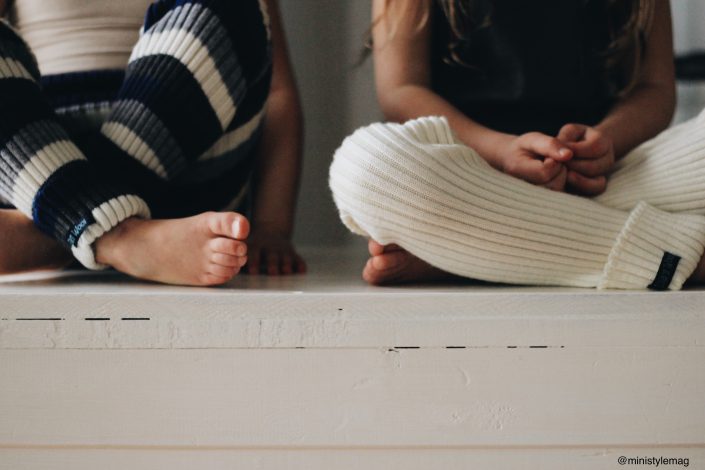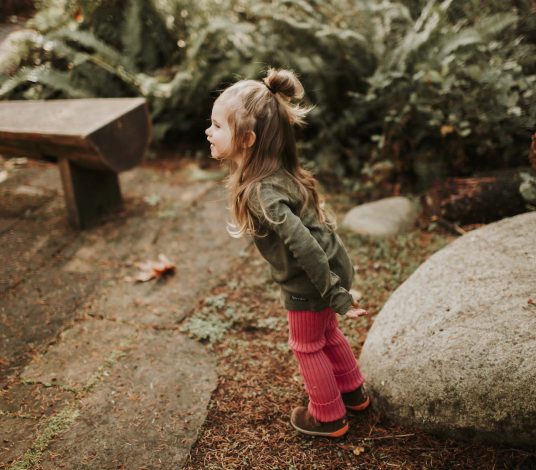How to Use Layers to Keep Your Kids Warm and Happy in All Temperatures
We've all been hearing it: “It’s too cold to go outside.” However, we believe that getting outside and enjoying nature is important all year round, regardless of the weather. As Alfred Wainwright so eloquently put it, “There’s no such thing as bad weather, only unsuitable clothing.” But how do you dress the kiddos so they will be comfortable when the temperature drops? Check out this handy guide to give you an idea on which layers and materials work best to keep your kids warm and happy in all temperatures. Then get ready to make some fun outdoor family memories this winter.
The Basics
Layers can be broken into 3 main categories:
Base Layer
This is the layer closest to the skin. It wicks sweat away from the skin to keep you warm and dry.
Best Materials: Merino wool is our favorite, especially base layers from Ella’s Wool, but synthetic materials such as polyester and nylon can work as well. You’ll want to AVOID COTTON! It collects and holds on to moisture which can then chill the skin when it’s cold and lead to a drop in body temperature.
Middle Layer (also called "second layer")
This layer goes right on top of the base layer and it retains body heat to provide an insulating layer of warmth. It is generally thicker and “fluffier” than the base layer
Best Materials: Thick knit wool, such as these tube leggings, polyester fleece, down insulated, and synthetic insulated are all great options.

Outer Layer
This shell layer shields you from the elements such as wind, rain, and snow.
Best Materials: Depending on the weather, you’ll need water-resistant or waterproof, breathable shells.
Layering Based on Temperature
Chilly (50-60 degrees F)
While this temperature range may not seem concerning, it’s important to remember that children (especially babies) are not as efficient at regulating their own body temperature. Start with a base layer such as a bodysuit for babies or long-sleeve shirt for older kiddos made with Merino wool or synthetic materials. Add pants and a sweater, and top it off with a light wind or rain jacket if needed. Be sure to add a thin hat for babies (especially the adorable hairless cuties) and socks with shoes or booties to keep extremities warm.

Cold (40 - 49 degrees F)
As it gets colder, clothing materials become more important to keep kiddos warm and dry. Comfortable kids mean you won’t have to cut outdoor adventures short due to discomfort. Start with a quality bodysuit for babies made from merino wool or long johns for older kiddos such as these. Add a mid-layer such as a fleece sweater/jacket and pants. You can then top it off with a wind or rain jacket medium-warmth hat, a neck warmer, thin mittens, shoes or booties.
Frigid (20-39 degrees F)
Having fun outdoors in these temperatures is definitely doable with the right layers. Start again with a bodysuit or long johns made from Merino wool or synthetic material. Layer on a thick wool or synthetic sweater and pants. For the outer layer, we recommend a well-insulated jacket or snowsuit. Top it off with a thick hat, warm mittens, a neck warmer and winter boots.
For more tips on layering, check out these articles:
Keeping your Family Warm on the Trail in Winter
How to Layer When Babywearing in the Cold
How to Dress Babies for Cold Weather infographic.
Join a community of parents that will venture outdoors with you in all weather. Become a Hike it Baby member today! 
ABOUT OUTGROWN
OutGrown is a 501(c)(3) nonprofit that works to create a world where everyone can enjoy the physical and mental benefits of spending time outside. We are focused on creating opportunities and removing barriers to access so families with babies and young children can take their first steps outside. We believe all families have the right to connect with nature, benefit from spending time outdoors and be inspired to a lifelong love of nature. Since its grassroots inception in 2013, OutGrown is a growing community of 280,000 families and over 300 volunteer Branch Ambassadors. More information on all of our programs can be found at WeAreOutGrown.org
EDITORS NOTE:
We hope you enjoyed reading this article from OutGrown. We’re working hard to provide our community with content and resources that inform, inspire, and entertain you.
But content is not free. It’s built on the hard work and dedication of writers, editors, and volunteers. We make an investment in developing premium content to make it easier for families with young children to connect with nature and each other. We do not ask this lightly, but if you can, please make a contribution and help us extend our reach.




Comments